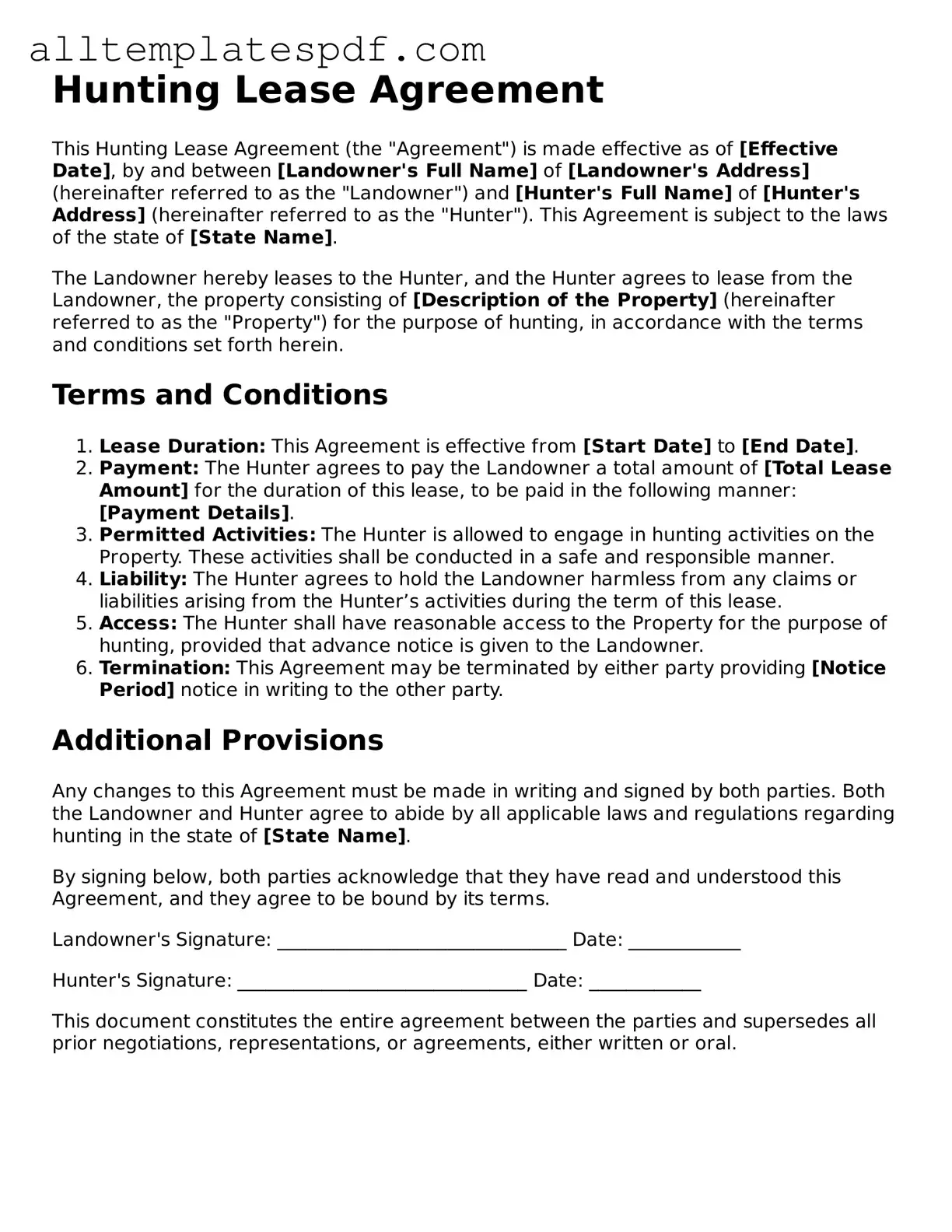When filling out a Hunting Lease Agreement form, individuals often overlook critical details that can lead to misunderstandings or disputes. One common mistake is failing to clearly define the hunting rights granted. Without specifying whether the lease includes all types of game or just certain species, confusion may arise later on.
Another frequent error involves neglecting to include the lease term. Individuals may assume that the duration is understood, but it is essential to explicitly state the start and end dates. This omission can result in disagreements about the timing of the lease and the rights associated with it.
Many people also forget to specify the rental payment terms. It is crucial to outline how much the lease will cost, when payments are due, and acceptable methods of payment. Without this clarity, landlords and tenants may find themselves in conflict over financial obligations.
Additionally, failing to address liability issues can pose significant risks. A well-drafted agreement should include clauses that outline who is responsible for injuries or damages that occur on the property. This protects both the landowner and the hunter from potential lawsuits.
Another mistake is not including details about property boundaries. Clear descriptions or maps of the leased area help prevent trespassing and ensure that both parties understand the limits of the hunting rights. Ambiguities in this regard can lead to disputes and potential legal issues.
Some individuals neglect to outline the responsibilities for property maintenance. It is important to specify who will be responsible for upkeep, such as maintaining access roads or managing wildlife populations. This ensures that both parties are aware of their obligations and can avoid future misunderstandings.
Moreover, failing to address the issue of subleasing can create complications. If the agreement does not explicitly prohibit or allow subleasing, hunters may feel entitled to bring others onto the property without the landowner's consent, leading to potential conflicts.
Another common oversight is not including a termination clause. A clear process for ending the lease can prevent disputes if either party wishes to terminate the agreement early. Without this provision, misunderstandings can arise regarding the conditions under which the lease can be ended.
Lastly, individuals often forget to review the entire document before signing. Taking the time to read through the agreement carefully can help identify any errors or omissions. This final step can save both parties from future complications and ensure that the terms are understood and agreed upon.
